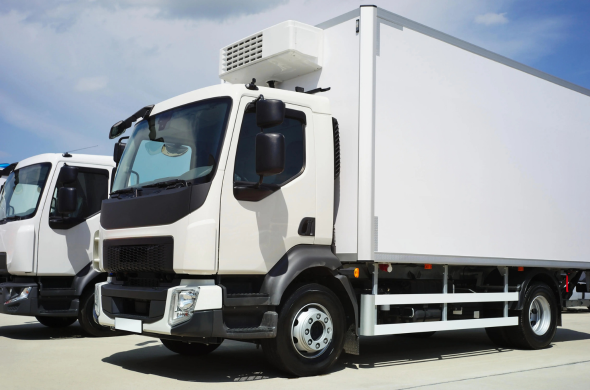Poultry is a core component of the global food supply. It provides important access to nutrients to numerous populations. Global production has reached 140 Mln. Ton in 2023 and continues to grow at a steady pace year after year. Though an efficient form of animal husbandry, there is a constant effort to further enhance production processes and efficiencies.
In the United Arab Emirates (UAE), chicken meat production is forecast to grow 17% by 2025. Population growth will contribute to about 6% of that growth rate, while increased consumer spending, increases in tourism, and government incentives will also support the growth.
Modern poultry farming must consider the rapid increase in demand year over year, as well as the need to reduce costs, improve nutrient levels, and minimize negative environmental impacts. Technology is transforming poultry farming practices to increase efficiency, productivity, and sustainability.
Consider the following already-in-play methods that are helping poultry farmers achieve their goals. Work with an agricultural consulting firm to determine which of these methods could be beneficial to any production process.
Technological Advancements in Poultry Housing
Throughout the UAE, opportunities exist for enhancing poultry farming. With the aid of farming consultancy services, the adaption of these strategies and technologies can contribute to improved production, efficiencies, and revenue growth.
Remote Sensing Technology
Remote sensing is one of the foundations of modern poultry farming in the UAE. It enables poultry farmers to have real-time insight into the conditions within the poultry house, as well as in areas of birth health and bird performance. Sensors collect data to enable precise poultry production. This may include:
- Applications that monitor environmental conditions in real-time using smartphone applications, including ammonia gas, water levels, temperature, and humidity.
- Sensors may be used to estimate body weights and measure uniformity within the flock.
- Modern poultry farms incorporate automated control systems, including cooling pads, showers, and feed distribution.
- Manure collection and management improve conditions, including using belts to palletize dried manure out of the housing.
- Advanced water systems work to reduce waste while also preventing contamination.
Precision Feeding Technologies
Precision feeding technologies enable poultry farms to provide better access to necessary nutrients while reducing waste. These technologies automatically monitor flocks to provide for adjustment needs.
Precision Livestock Farming is another resource used in various livestock applications. It offers real-time insight to farmers to monitor their flock and take action when needed to prevent concerns. Utilizing sensing systems that track CO2, ammonia, and greenhouse gas levels, it is possible for poultry farmers to have a more precise application of nutrients to meet the needs of the flock.
This is not a one-time adjustment but rather enables tailored adjustments to a flock’s diet on a daily basis. This optimizes nutrient requirements in each setting while reducing nutrient waste or overfeeding.
Health Monitoring and Management
Technology is pivotal in improving health monitoring within the modern poultry industry. One of the most direct examples is the use of IoT sensors being used in some UAE farms. Placed throughout the chicken house, these sensors can capture details that indicate the early signs of disease or health risks. These may include body temperature changes or symptoms related to infectious disease.
That data is transferred directly to veterinarians to provide quick detection of the concern. At the same time, poultry farmers can respond as needed, including improving the environment or ventilation to inhibit the spread of infectious diseases. Advanced UAE poultry farms are utilizing the easy access of connectivity to monitor health, minimize risk factors to production, and enhance product quality.
Data Analytics and Farm Management
As with any industry, data is a powerhouse. It provides insight into what can be done to improve productivity and outcomes in all applications. In the modern poultry industry, big data, supported by artificial intelligence, enables organizations to track, record, and measure poultry production at every part of the lifecycle.
Biosecurity and Disease Prevention
Biosecurity, or the safety of living things, aims to prevent pathogens from entering into poultry farms. The technology works to isolate, control sanitation, improve vaccination rates, and monitor air quality and disease signs in real time.
Biosecurity best practices aim to reduce the risk of disease through the use of:
- Vaccination
- Hygienic general husbandry services
- Improved stock selection
To achieve these goals, modern poultry farming incorporates the use of UVC technology as a proactive approach to prevent outbreaks. Smart poultry house ventilation works to provide better overall optimized environmental controls. The utilization of radio-frequency-identification-based (RFID) real-time automated monitoring systems aids in ensuring sanitation and minimizing disease risk.
Sustainability and Environmental Impact
One of the most impactful ways technology is improving the modern poultry industry is through the use of sustainability efforts. Technology aids farmers in reducing greenhouse emissions and enables improved feed that supports growth without adding to the carbon footprint. The utilization of solar heating and natural ventilation methods reduces the high impact of energy-intensive hen houses.
A key concern in this area, though, is balancing sustainability practices with cost-effectiveness. It is critical to create a scenario where environmental sustainability is related to bird efficiency and, over the long term, profitability.
Eco-friendly methods can achieve both cost-effectiveness and environmental benefits. Waste management, energy consumption, and reduced water usage tend to be the most important areas of focus. Through the use of IoT and sensing technology, it is possible for farmers to offer a better level of support to the bird while also enhancing the production process.
A Focus on Regional Challenges in the UAE
Each of these advanced technologies and innovations are contributing to the long-term support of the local environment. By taking into consideration the unique challenges of the UAE, along with the broader Middle Eastern region, farmers are tackling some of the biggest challenges with ease:
- Limited freshwater: Better management of freshwater in UAE including through the use of more precise control over the limited resource, are helping farmers mitigate one of the longest and most complex aspects of farming in the region.
- Space considerations: In some regions, including Saudi Arabia, spce is a core concern. Poultry farming typically requires significant space. However, the inclusion of vertical farming has provided extensive solutions, making better use of dedicated space.
- Food insecurity: In some regions, food insecurity is an ongoing concern. By utilizing very specific strategies for the community, with the support of consultancy services, poultry farmers increase the cost-effectiveness of production and can provide better regional support to alleviate food insecurity.
With solutions such as controlled-environment agriculture, there’s less space used, better management of resources, improved product yields, and significantly less costs, all of which tackle the specific concerns of the UAE region.
Consumer and Market Trends
While technology continues to focus heavily on improving the farming production process, UAE farmers must also consider consumer and market trends. The industry is seeing more demand from customers for “clean label” and “free-from” claims as consumers seek more transparency in the products they purchase. Demand for no additives and preservatives, as well as gluten-free products, continues to be prominent across the global poultry industry.
Conclusion: Exploring the Modern Poultry Industry
The utilization of technology to enhance the safe growth of the poultry industry is critical, though not simplistic. Advisory services can help support the dynamic improvement of poultry farming on a global scale. Seek out the latest technology to add to your own farming practice to continue to play a valuable role in the poultry industry’s continued dominance.
Read our latest insights, ideas, and perspectives that explore the trends shaping the future of business and society. Our consultancy services go hand-in-hand with these insights, confirming our position as industry leaders. Get in touch to find out more about our consulting services and industry expertise.



